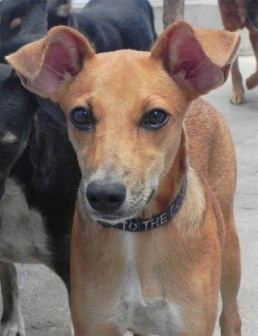Continued from last week
Symptoms
The clinical signs associated with this disease are variable. In fact, my experience has been that many of the X-ray pictures showing terribly dysplastic joints do not correlate with the expected degree of lameness. Dogs compensate beautifully (some of you might have seen the film footage on a ‘Ripley’s Believe It or Not‘ TV show, in which a dog having only two legs – on the same side – outran a car).
The main sign of hip joint dysplasia (HJD) is lameness and an expression of pain when the animal rises from a supine (sitting or lying) position or has to use the stairs or walk some long distance. If no exercise is involved, the lameness could be mild, moderate or severe, but it is always heightened if the animal is subjected to the stress of running or walking long distances. In an effort to ease the pain associated with HJD, the animal seeks to take the strain off the affected leg; consequently the dog exhibits a ‘rabbit-hopping‘ type gait – jump and stop, jump and stop. Young dogs, in whom the malady has not fully developed, tend to walk with a swaying gait.

This canine HJD is progressive and often crippling, but – as I have hinted in the first paragraph above – some dogs experience little discomfort despite abnormal changes in their joints. Of course, intense running and any physical activity involving the hind legs will aggravate the condition, and will almost surely reveal signs of the disease in an animal previously thought to be healthy.

As I mentioned last week, HJD is a heritable condition. As a result, if the related parents which have the genes (even recessive) for the defect, are allowed to mate, the chances of the offspring having HJD is greatly increased. However, we have seen dogs with normal hips give birth to dysplastic pups. But, by and large, even if one parent is carrying the ailment in his/her genes, then the HJD would be about twice as common among offspring litter mates.
During my days as a young veterinary assistant, I was involved, via the Small Animal Clinic of the University of Leipzig, in the eradication of this disease. In the Province of Saxony, Germany, steps taken to eliminate the HJD ailment included X-raying the young pups when they were four months old, and continuing the radiography three to four times more until the dogs were one year old. Any dog that was found to be showing signs of HJD was removed from the list of those dogs which would be included in the Pedigree Book for that breed. In fact, castration and spaying were recommended very strongly in dogs which exhibited HJD, so as to stop any possibility of this malady being reproduced.
Finally, I should mention that symptoms tend to appear firstly when the pup is somewhere between four and ten months of age. This, you will note, is exactly the period of rapid bone growth.
Next week, we’ll discuss the treatment of HJD.
Please implement disease preventative measures (vaccinations, routine dewormings, monthly anti-heartworm medication, etc) and adopt-a-pet from the GSPCA’s Animal Clinic and Shelter at Robb Street and Orange Walk, if you have the wherewithal to care well for the animals. Do not stray your unwanted pets, take them to the GSPCA’s Clinic and Shelter instead. If you do not wish your pet to have puppies or kittens, you may exploit the GSPCA’s free spay and neutering programme. If you see anyone being cruel to an animal, or if you need any technical information, please get in touch with the Clinic and Shelter by calling 226-4237.





